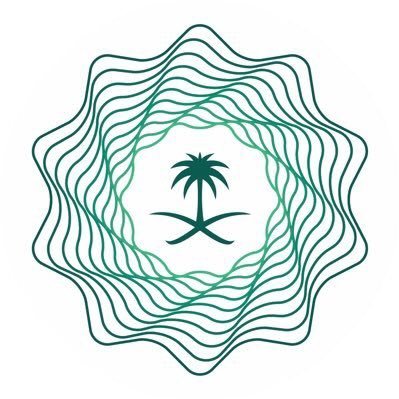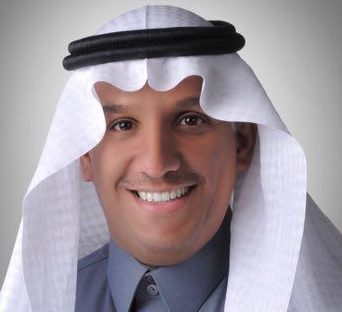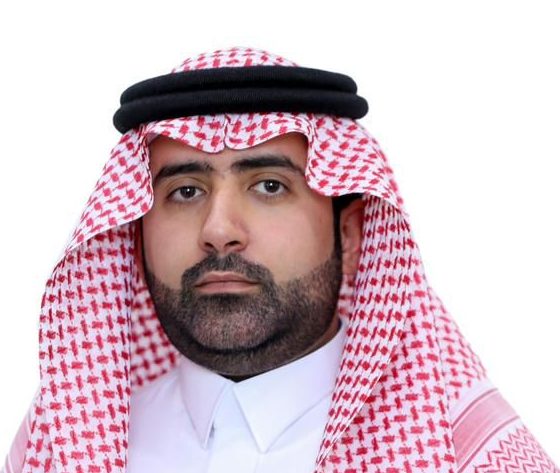© 2020 All rights reserved to Maaal Newspaper
Publisher: Maaal International Media Company
License: 465734
For the Fiscal Year 2022
1st Saudi Budget Surplus, in 8-Year, widely Expected
The first surplus, in the Saudi budget for the Fiscal Year 2022, is widely expected, to be achieved, in 8-year, as the Saudi economy is recording the highest growth rates, in a decade.
The main 3-pillar
Saudi Arabia will, shortly, announce the general budget for the Fiscal Year 2022, according to the expectations, as it is being announced, annually, before the end of the year.
Although the Ministry of Finance has announced, in the pre-budget statement its expectations that it will achieve a surplus starting from the Fiscal Year 2023 (in a conservative perspective), but many research centers have a different opinion, as they expected a surplus to be achieved, in the Fiscal Year, beginning directly next Fiscal Year (2022).
That is a full fiscal year, in advance of the ministry’s estimates, as the centers’ expectations are accompanied by evidences supporting their views.
In short, the budget surplus, for the first time in 8 years, would be achieved, resulting from the Kingdom experiencing highest economic growth rates, in a decade.
Ministry of Finance seeks to achieve sustainability of a balanced budget, in order that the last budget deficit will be in 2022, a point of view that parts ways with the estimates of investment of the research centers.
In light of the expectations of research centers, the pre-budget statement identified the three main pillars that would be under the focus, by the Saudi government during 2022 and beyond.
In addition to monitoring several factors that support the recovery of the economy, and the growth of non-oil revenues, as the latter is considered among the most important goals of the Kingdom Vision 2030.
On the other hand, the government expectations for its financial position, during the next year and following years, based as mentioned above on the three pillars, as follows:
Rationalization of expenditures: it is estimated that expenditures will amount to about SR955 billion for the fiscal year 2022, and that expenditures will continue to be controlled to go down up to about SR950-951 billion, in 2024.
This reflects the extent of the government’s commitment to continuing to raise spending efficiency and develop its effectiveness, in addition to re-arranging priorities based on developments and updates, in accordance with the requirements of the current phase of the economic plan.
In addition to providing more opportunities for the private sector to lead investment opportunities, continue to privatize some government assets and services and develop infrastructure projects.
As well as to contribute to the national development funds through the expansion of private sector financing, and the investments of the Public Investment, Fund through its approved strategy.
Spending Efficiency: The government efforts are exerted to enhance spending efficiency and achieve savings by enabling government agencies to adopt best practices, in terms of spending efficiency and support them with training, procedures and incentives to achieve the goals.
That is as the budget aims to achieve additional financial savings, estimated at about SR100 billion, during the time span from 2021 to 2025.
Meanwhile, the government aims to achieve savings at SR200 billion, in the time span of 2018-2023, as it actually achieved more than double this number by the Fiscal Year 2021.
During that year, as much as SR502 billion, until the second quarter of 2021 only, has been achieved.
Support restructuring: Work is going on to prepare a strategy for the support and social benefits system, that contains general directions, defines strategic goals, and clarifies the impact on beneficiaries and public finances, as well as recommendations resulting from the analysis of support programs and social benefits.
The Ministry of Finance confirmed that work is currently continuing on two main tracks, that the Committee on the Support and Social Benefits System is working on, namely the policy track, which includes data collection, analysis of the system and its characteristics, a questionnaire for support and subsidies programs, and reform to develop recommendations regarding these programs.
As well as the budget path, which includes a review of the budget and focus spending on strategic goals and priorities.
In 2022, the target is to develop performance indicators and issue reports on developments and trends in social spending.
Expectations of the highest economic growth rates, in a decade indicate that the Kingdom will achieve a growth rate, at 4.9% (Beltone Financial Company forecasts) and 7.5% (Ministry of Finance forecasts), while Jadwa Investment expected a growth of 7%, and all these numbers mean that the Saudi economy recording the highest rate growth, in 9 to 10 years (a decade ago), as the economy recorded a growth of 5.41% in 2012, while it had recorded a growth of 10% in 2011.
Ministry of Finance expected the economy to continue achieving big growth rates in the next three years, pushing the volume of the whole economy to SR2.99 trillion, in 2024.
Jadwa Investment company expected economic growth to rise significantly to reach 7% during 2022, thanks to a significant increase in the growth of the oil sector.
Jadwa expected that the Kingdom would record a surplus of SR35 billion in 2022, a year earlier than the date expected by current estimates of the Ministry of Finance.
It is also the first surplus in 8 years, specifically since 2013.
Strong growth levels for the non-oil sector, made likely that the value-added tax rate currently imposed will not change.
Al-Rajhi Capital expects that the Saudi budget will achieve a surplus between SR25-45 billion in 2022, compared to government expectations that indicated a deficit of SR52 billion, suggesting that the government is unlikely to change the value-added tax.
Al-Rajhi Capital’s expectations come despite the reservations in its expectations, regarding oil production at an average of 9.6 million barrels per day in 2022, while there are optimistic expectations raising the output to SR10.7 million barrels per day.
Despite the fluctuation in asset prices and fears so far from the new variable, or Omicron variant, it is expected that the price of a barrel will be at $72 a barrel.
Beltone Financial Holding company expects Saudi Arabia to witness the highest economic growth in 9 years, at the level of 4.9% during 2022, thanks to the increase in oil production and the strong improvement of the non-oil sector.
It is likely, too, that its oil production will reach 10.2 million barrels per day in 2022 on average, which will reflect in the growth of oil GDP by about 7.8%, on an annual basis.
Forecasts for the main items in the budget until 2024, according to the Ministry of Finance actual budget forecast, estimates for 2020-2021, 2021- 2022, 2023-2024 total revenues of as much as 782, 849 – 930, 903, and 968, 992, respectively, and all are in the Saudi Riyal.
High creditworthiness and Moody’s
The credit rating agency raised its future outlook for the Kingdom’s economy from negative to stable, fixing its credit rating at A1 and confirmed Saudi Arabia’s ability to reverse many of the debts that increased in the past year.
Standard & Poor’s believes that the Saudi economy is able to quickly recover from the shocks of last year, with the recovery of global demand for oil and the increase in private consumption, stressing that the Saudi government will continue in the coming years its efforts to achieve the Kingdom’s Vision 2030, which mainly aims to support non-oil sector, private sector demand, and the country’s social transformation through a series of large-scale projects.
At the same time, Fitch believes that Saudi Arabia’s maintaining of large financial reserves, provides it with a great deal of flexibility to facilitate public financing needs, in the event of instability of oil revenues.
Both Moody’s and Fitch praised the figures included in the pre-budget statement of the Kingdom’s general budget for the Year 2022, reflecting the soundness of the financial policies and structural reforms undertaken by the government in light of Kingdom Vision 2030.
The three agencies issued 22 classifications, during the year 2021, three of which are related to the state of the economy, and 3 of them are for unlisted companies, as well as other there for Aramco’s sukuk program denominated, in dollars, while the remaining 15 classifications were for companies listed on the financial market and the strength of the solvency of the state and companies alike.
Public debt
Planning to reduce the public debt, as it is expected to reach about SR989 billion for the Year 2022, which is equivalent to 31.3% of GDP, with expectations of a decrease in the debt ratio of GDP to reach 27.6% in the Year 2024 (as a result of expectations of an improvement in the GDP, and it is expected that the volume of GDP will remain stable.
Public debt in the medium term as a result of expectations of achieving budget surpluses from 2023 (according to the Ministry of Finance’s forecasts) or in 2022 (according to research firms) and directing issuances to repay the debt principal, and maintaining appropriate rates of government reserves to enhance the Kingdom’s ability to deal with traumas; according to the World Bank and the International Monetary Fund, the Kingdom has one of the lowest debt-to-GDP ratios, in the Middle East, based on the debt ratio at the end of 2020.
Factors that support continued growth, in addition to the three previously mentioned pillars, the government is working on in order to achieve growth of the economy.
There are a number of factors that support this growth, including the expectations that the tourism sector will regain strength, during the next year, after the slowdown in growth during the past year, due to the pandemic, following the easing of travel restrictions.
Increasing vaccination rates in the country, which will contribute to reviving incoming tourism.
This supports the Kingdom’s adoption of the National Tourism Strategy, which aims to raise the tourism sector’s contribution to the GDP to more than 10% by 2030, and provide the largest number of job opportunities, in line with the Kingdom’s Vision 2030, in addition to the establishment of a tourist visa in September 2019.
That would allow citizens of as much as 49 countries to obtain it from on the line, constituting nearly 80% of the capacity of tourism spending worldwide, and include 75% of the world’s luxury tourist trips.
The Kingdom has also established the Tourism Development Fund to encourage tourism investments in the, to diversify sources of income and increase the contribution of the tourism sector to the GDP.
Umluj area and the development of its coastal areas, and recently the Red Sea Project, are breakthroughs in government efforts to revitalize the sector.
Also among the factors that support a growth boom is the state’s tireless endeavor to develop the industrial sector, as it intends to raise its contribution to the domestic product from approximately 13% at the present time to 20% by 2030, supported by raising the proportion of local content, in government procurement and launching the “Saudi Made” program, in addition to the state’s support for industrialists.
The state’s focus on the medium, small and micro enterprises sector, as the vision aims to raise the percentage of small and medium enterprises’ contribution to the GDP from 20% to 35%, and the Saudi Central Bank had launched, in April 2020, too, in collaboration with the Small and Medium-sized Enterprises Funding Guarantee Program “Kafala” the guaranteed financing program, through which 95% of the value of the granted financing is guaranteed, according to the mechanisms approved within the Kafalah Program.
On the other hand, the government provides a lot of support to enhance export operations, which is one of the most important sources of foreign
exchange, in addition to tourism and foreign investments.
| The main items of the Saudi General Budget, in the latest 20-Year | |||||||
| Revenues | Expenditures | Surplus, Deficit | |||||
| Fiscal Year | Oil income | Non-Oil income | Total | Current Expenditures | Capital Expenditures | Overall | |
| 2001 | 183,915 | 44,244 | 228,159 | 223,508 | 31,632 | 255,140 | (26,981) |
| 2002 | 166,100 | 46,900 | 213,000 | 203,500 | 30,000 | 233,500 | (20,500) |
| 2003 | 231,000 | 62,000 | 293,000 | 223,530 | 33,470 | 257,000 | 36,000 |
| 2004 | 330,000 | 62,291 | 392,291 | 247,649 | 37,551 | 285,200 | 107,091 |
| 2005 | 504,540 | 59,795 | 564,335 | 284,173 | 62,301 | 346,474 | 217,861 |
| 2006 | 604,470 | 69,212 | 673,682 | 322,411 | 70,911 | 393,322 | 280,360 |
| 2007 | 562,186 | 80,614 | 642,800 | 347,199 | 119,049 | 466,248 | 176,552 |
| 2008 | 983,369 | 117,624 | 1,100,993 | 388,839 | 131,230 | 520,069 | 580,924 |
| 2009 | 434,420 | 75,385 | 509,805 | 416,594 | 179,840 | 596,434 | (86,629) |
| 2010 | 670,235 | 70,637 | 740,872 | 483,996 | 169,890 | 653,886 | 86,986 |
| 2011 | 1,034,362 | 83,165 | 1,117,527 | 583,895 | 242,805 | 826,700 | 290,827 |
| 2012 | 1,144,818 | 101,720 | 1,246,538 | 713,330 | 203,868 | 917,198 | 329,340 |
| 2013 | 1,035,048 | 117,564 | 1,152,612 | 731,873 | 262,861 | 994,734 | 157,878 |
| 2014 | 913,347 | 126,794 | 1,040,141 | 821,160 | 319,443 | 1,140,603 | (100,462) |
| 2015 | 446,432 | 166,261 | 612,693 | 790,979 | 210,313 | 1,001,292 | (388,599) |
| 2016 | 333,698 | 185,759 | 519,457 | 696,358 | 134,155 | 830,513 | (311,056) |
| 2017 | 435,899 | 255,611 | 691,510 | 722,208 | 207,791 | 929,999 | (238,489) |
| 2018 | 611,239 | 294,370 | 905,609 | 891,147 | 188,320 | 1,079,467 | (173,858) |
| 2019 | 594,424 | 332,422 | 926,846 | 889,996 | 169,449 | 1,059,445 | (132,599) |
| 2020 | 413,049 | 368,785 | 781,834 | 920,646 | 155,088 | 1,075,734 | (293,900) |
| Total | 11,632,551 | 2,721,153 | 14,353,704 | 10,902,991 | 2,959,967 | 13,862,958 | 490,746 |
| Source: SAMA, Maaal follow up unit’s calculations | |||||||
| Item | Real |
Budget |
Estimate | Estimates | Fiscal Year | |
| Fiscal Year | 2020 | 2021 | 2021 | 2022 | 2023 | 2024 |
| Total Revenues | 782 | 849 | 930 | 903 | 968 | 992 |
| Total Expenditures | 1076 | 990 | 1015 | 955 | 941 | 951 |
| Deficit | -294 | -141 | -85 | -52 | 27 | 42 |
| As a percentage to the GDP | -11.20% | -4.90% | -2.70% | -2% | 0.80% | 1.20% |
| Public Debt | 854 | 937 | 937 | 989 | 989 | 989 |
| As a percentage to the GDP | 32.5% | 32.7% | 30.2% | 31.3% | 29.2% | 27.60% |
| Source: Ministry of Finance, SAMA, Maaal follow up unit’s calculations and expectations | ||||||
Related






